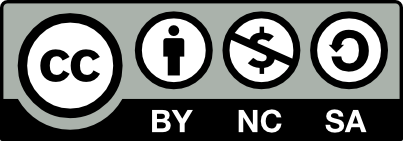Publicación: Del arte, sus sentidos y peripecias
Fecha
2017-06-14
Autores
Título de la revista
ISSN de la revista
Título del volumen
Editor
Universidad Católica de La Plata. Facultad de Humanidades
Resumen
Qué cosa sea el arte interpela al filósofo de antiguo. Cuando se planteó la pregunta por el origen de la cultura y la cuestión antropológica, acaparó el interés de los filósofos; la atención por las producciones humanas y, más estrictamente, por la esencia del arte resultaba inevitable. A la poesía y al arte, que han mostrado y acompañado la existencia del hombre, se dirige la investigación. La ambigüedad de la pregunta ¿Qué es el arte? es manifiesta: ¿se refiere al arte como posesión de un sujeto o en cuanto producto de unas acciones regladas? Con respecto a lo primero, se ha de averiguar si es un conocimiento innato o adquirido, y en tal caso, supeditado a normas que se pueden enseñar y aprender; si se trata esencial-mente de una actividad creadora y qué facultades intervienen en su accionar; cuáles son características de quienes lo poseen; la consideración social que recibe el artista a través del tiempo histórico. En cambio, si se apunta al arte como producto —la obra de arte—, cabe formular las siguientes preguntas: ¿qué relación guarda con la naturaleza?, ¿cuál es su esencia?, ¿qué valoración hace la sociedad acerca de él?Las producciones artísticas, pertenecientes a variadas escuelas y movimientos, han merecido, a lo largo del tiempo, encomios y diatribas. Sin embargo, nada más deletéreo que el antiarte presentado como arte. Tras las experiencias del siglo xx, el panorama actual resulta más complejo aún, lo cual renueva la pregunta por el arte.A continuación, presentamos el cuestionamiento del arte mismo de la antigüedad a nuestros días.
What art is has addressed the philosopher since ancient times. When the question of the origin of culture and the anthropological issue arose, it hogged the interest of philosophers, the attention for human productions, and more strictly for the essence of art, was inevitable. To poetry and art, which have shown and accompanied human existence, this research is di-rected.What is art?The ambiguity of the question is manifest: does it refer to art as the pos-session of a subject or as the product of regulated actions?If art is the possession of a subject, it must be ascertained whether it is an innate or acquired knowledge, and in that case, subject to rules that can be taught and learned; what powers are involved in their actions; which are characteristics of those who possess it; the social consideration that the artist receives through historical time.On the other hand, if one points to art as a product - the work of art - one can question oneself, what relation it has with nature, what its essence is, what value society makes of it.Artistic productions, belonging to various schools and movements, have deserved over time, praises and diatribes. However, nothing is more dele-terious than the anti-art presented as art. After the experiences of the twentieth century, the current scenario is more complex, which renews the question for art.Next, we present the questioning of the very art of antiquity to our days.
What art is has addressed the philosopher since ancient times. When the question of the origin of culture and the anthropological issue arose, it hogged the interest of philosophers, the attention for human productions, and more strictly for the essence of art, was inevitable. To poetry and art, which have shown and accompanied human existence, this research is di-rected.What is art?The ambiguity of the question is manifest: does it refer to art as the pos-session of a subject or as the product of regulated actions?If art is the possession of a subject, it must be ascertained whether it is an innate or acquired knowledge, and in that case, subject to rules that can be taught and learned; what powers are involved in their actions; which are characteristics of those who possess it; the social consideration that the artist receives through historical time.On the other hand, if one points to art as a product - the work of art - one can question oneself, what relation it has with nature, what its essence is, what value society makes of it.Artistic productions, belonging to various schools and movements, have deserved over time, praises and diatribes. However, nothing is more dele-terious than the anti-art presented as art. After the experiences of the twentieth century, the current scenario is more complex, which renews the question for art.Next, we present the questioning of the very art of antiquity to our days.
Descripción
Palabras clave
ARTE, TENENCIA, CLASIFICACIONES, POLÉMICA, ANTIARTE, CUESTIONAMIENTO, ART, TENURE, CLASSIFICACIONS, POLEMIC, ANTI-ART, QUESTIONING









